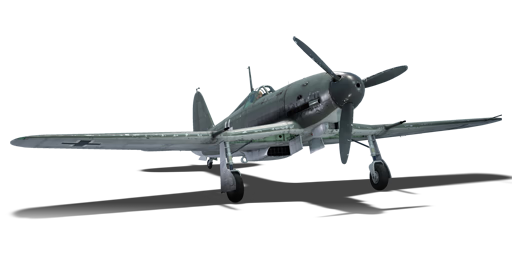




The Stato Maggiore dell'Aeronautica requested Fiat to develop an aircraft based on the G.55 airframe, which would later become the FIAT G.56, practically an upgraded version of the G.55 with a reduction in armament from three 20 mm cannons and two 12.7 mm machine guns to just three 20 mm cannons so as to reduce the weight of the aircraft. In addition to this a new engine was mounted, the DB 603 with 1,750 HP, 275 more than the G.55. This project had already been thought of in 1942, but with the Allied invasion and continuous bombing of the aeronautical and logistics infrastructure the construction of the G.56 was slowed down considerably. A prototype of the G.56 was built before the armistice of 1943, but immediately after it was painted with the insignia of Germany to simplify the recognition. The only two G.56 built would remain prototypes.
Introduced along with the initial Italian air tech tree in Update 1.69 "Regia Aeronautica", the G.56 proves to be very balanced for engine power, armament, and manoeuvrability, able to engage in both turn fights and energy fights. Thanks to the fuselage it can sustain several hits without breaking or being destroyed.
flaps
flaps
flaps
brake
| Belt | Belt filling | Armor penetration (mm) at a distance: | |||||
|---|---|---|---|---|---|---|---|
| 10 m | 100 m | 500 m | 1000 m | 1500 m | 2000 m | ||
| IT/IT/APHE/HEI | 21 | 19 | 8 | 3 | 1 | 1 | |
| IT/HEI/HEI/AP-I | 27 | 24 | 14 | 7 | 3 | 2 | |
| AP-I/HEI/HEI/HEI/HEI/IT | 27 | 24 | 14 | 7 | 3 | 2 | |
| APHE/APHE/APHE/IT | 21 | 19 | 8 | 3 | 1 | 1 | |
| FI-T/FI-T/FI-T/IT/IT | 21 | 19 | 8 | 3 | 1 | 1 | |
| HEI/HEI/HEI/APHE/AP-I | 27 | 24 | 14 | 7 | 3 | 2 | |












Flight performance | |
|---|---|
Survivability |
|---|
Weaponry | |
|---|---|